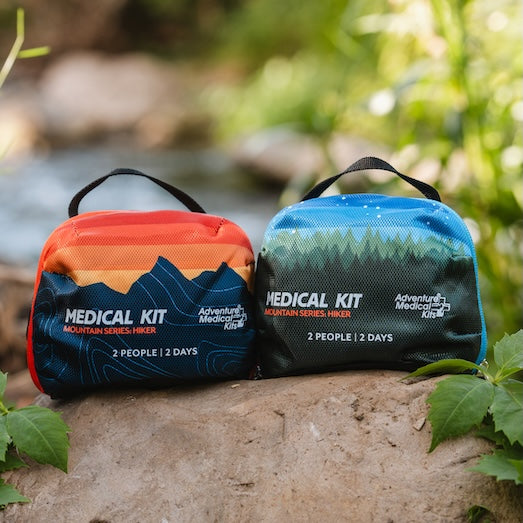So you’ve decided to head off on a trip of your own. You’ve done your training; you’ve packed the Ten Essentials; but what about your trip plan? If you require assistance during your excursion, a well-written trip plan left with a trusted friend or relative can mean the difference between a speedy and safe rescue operation or unnecessary anxiety for your emergency contact and a lengthy and involved search effort. Here are some tips on how to write a trip plan that will provide you with a safety net if your next outdoor adventure goes awry.
Doing Your Homework: Route Planning
The foundation of any trip plan is a route description and expected return time. For short trips on popular routes, you might be able to avoid doing any involved research since the route is well-described, the trail is clearly marked, and the trip duration is a well-established consensus. Even so, familiarize yourself with the route details to avoid getting lost. A study reported by National Geographic attributes forty-one percent of cases of lost hikers to “wander[ing] off trail.”
For trips with less documented itineraries, whether off-trail or not, you may need to do more research to determine the duration of each day’s travel. There are numerous methods to estimate travel time, but all require knowing the distance and elevation change between waypoints on your route and anticipating the route conditions on each leg, e.g., on-trail travel, off-trail travel, bushwhacking, or scrambling.
Books on navigation such as Staying Found by June Fleming can provide a rudimentary introduction to estimating trip durations, but the gold-standard widely used by mountain guides is the Munter Method. You can perform Munter Method calculations by hand, but apps such as GuidePace make this process easy and less error-prone. Whatever method is used to make travel time estimates, using feedback from past trips can allow you to account for how your individual fitness, technical abilities, and travel style will deviate your pace from general estimates. In this way, by comparing the actual travel time to the estimate of past trips, you can make future estimates more precise.
When estimating your return time, be sure to accommodate for non-moving time, such as for breaks and meals, and also account for the time it will take to get to cell phone service to let your emergency contact know you have safely completed the trip. You can also include references to how deviations in your route would alter your return time, such as might be the case for avoiding dangerous stream crossings or avalanche-prone slopes.
Features of a Trip Plan
A trip plan offers guidance to your emergency contact on when and how to initiate a search and briefs the search and rescue (SAR) team so they can locate you as efficiently as possible. The plan should include information on:
- Group Members – Give each member’s name, age, and pertinent medical history.
- Travel Route – Describe your planned route, including your mode of travel, ETA at waypoints and camping locations, and any possible deviations from the route due to anticipated difficulties.
- Equipment – List the equipment – both personal and shared – that your group will carry, being sure to include items from the Ten Essentials, emergency equipment such as electronic emergency beacons and bivy sacks and technical climbing equipment, if applicable. Also, describe any vehicles parked at the trailhead and the color of your shelter and clothing.
- Emergency Procedure – The backstop time at which the contact should initiate a search and the authority to contact in order to do so. Note that this backstop time might be significantly later than your anticipated return time to account for normal, non-emergency deviations from travel time estimates, such as if you bonk or encounter a muddy trail.
If you are tempted to skimp on details in a specific section, don’t! Matt Hoffman, member and past chair of Everett Mountain Rescue, advises that “all of the information in a trip plan is important” since it’s hard to anticipate what information will be applicable to a possible SAR mission.
Websites such as HikerAlert and mobile apps such as AdventureSmart provide templates for creating trip plans and can automatically alert your emergency contacts if you do not check-in by a specified time. You can also use your local SAR team for resources to aid trip planning. Because each region has unique terrain and weather conditions, the SAR team’s recommendations may deviate from those made above. Examples of such resources include the trip plan forms available from Everett Mountain Rescue and Olympic Mountain Rescue.
Direct Communication with Rescuers
Of course, if you find yourself in need of help in the wilderness, you can most effectively coordinate your rescue if you can directly contact emergency responders. With a call to 911, cell phones can provide the easiest option for such communication. Cell phones are not only useful for trips in or near the front country where cell service is robust, but they may also be useful for trips farther from civilization. Due to the protocols that govern the way that cell phones connect with the 911 network, even if your phone does not show a signal, the phone’s digital handshake with distant cell towers may be enough to help authorities locate you if you call 911.
For trips far off the grid, you can use emergency beacons to alert authorities of your need for a rescue and to allow them to more quickly pinpoint your location. Emergency beacon technology comes in two offerings, each with distinct advantages:
- Personal locator beacons (PLBs) – Lower up-front and ongoing costs, longer battery life, stronger distress signal
- Satellite messengers – Capability of two-way texting for both emergency and non-emergency communications, replaceable batteries, may offer GPS functionality
A full discussion of the differences between these technologies is available through various online resources and books such as Wilderness Navigation by Gene Trantham and Darran Wells.
Your First Lines of Defense
Your first lines of defense during a wilderness trip are adequate preparation and sound decision making. However, if unfortunate circumstances leave you in need of a rescue, you can find solace in having maximized your chances of being found by leaving a well-researched and well-written trip plan with a trusted friend. Stay safe out there!














